Designing a mosque entails challenges for architects who have to consider the strict and detailed century-old requirements. However, modern architects manage to find new ways to blend traditional architectural elements of the rich Islamic artistic heritage with new forms, materials and styles, creating contemporary places of worship.
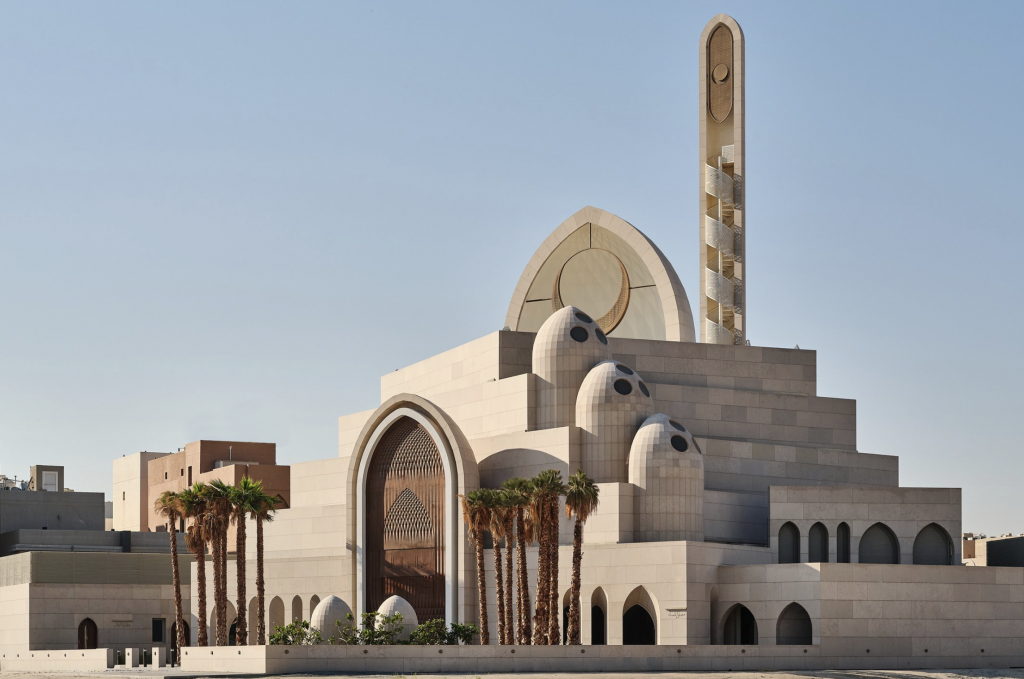
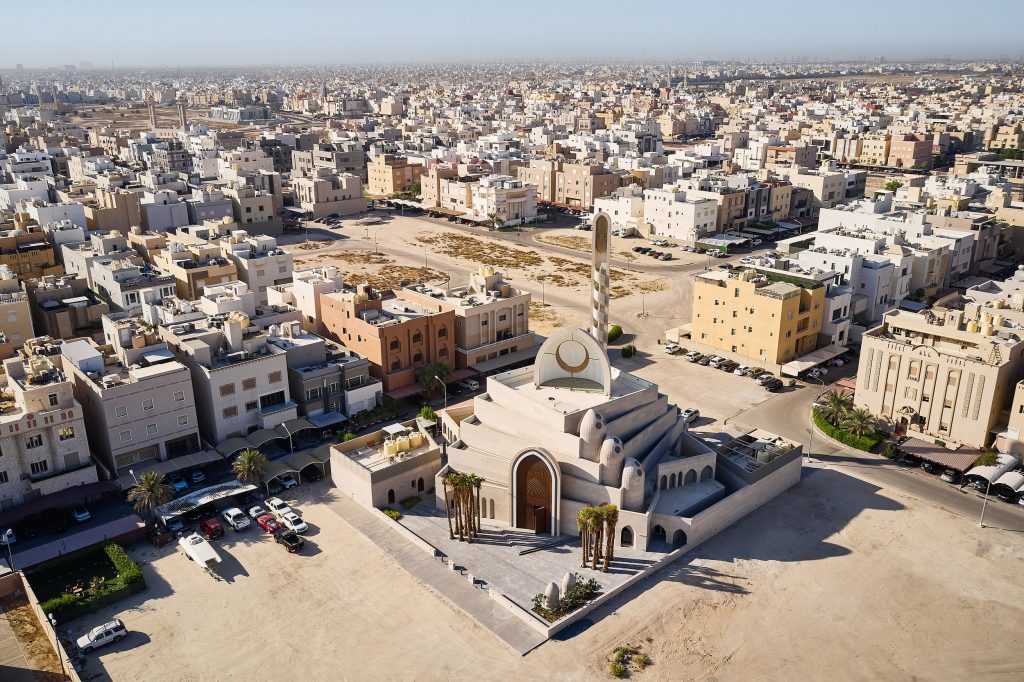
Mamluki Lancet Mosque by Babnimnim Design Studio (also header image)
Inspired by the traditional Mamluki architecture of Islamic Cairo, local Babnimnim Design Studio has created a modern spiritual building for the local community in Al-Masayel, Kuwait. The central design concept draws inspiration from the Moqarnas, a distinctive Islamic architectural element that balances the load of a dome over a square room through intricate geometry. The architects also draw on other classic Islamic motifs, including calligraphy relief, intricate geometric ornamentation, and lancet archways with a pointed tip.
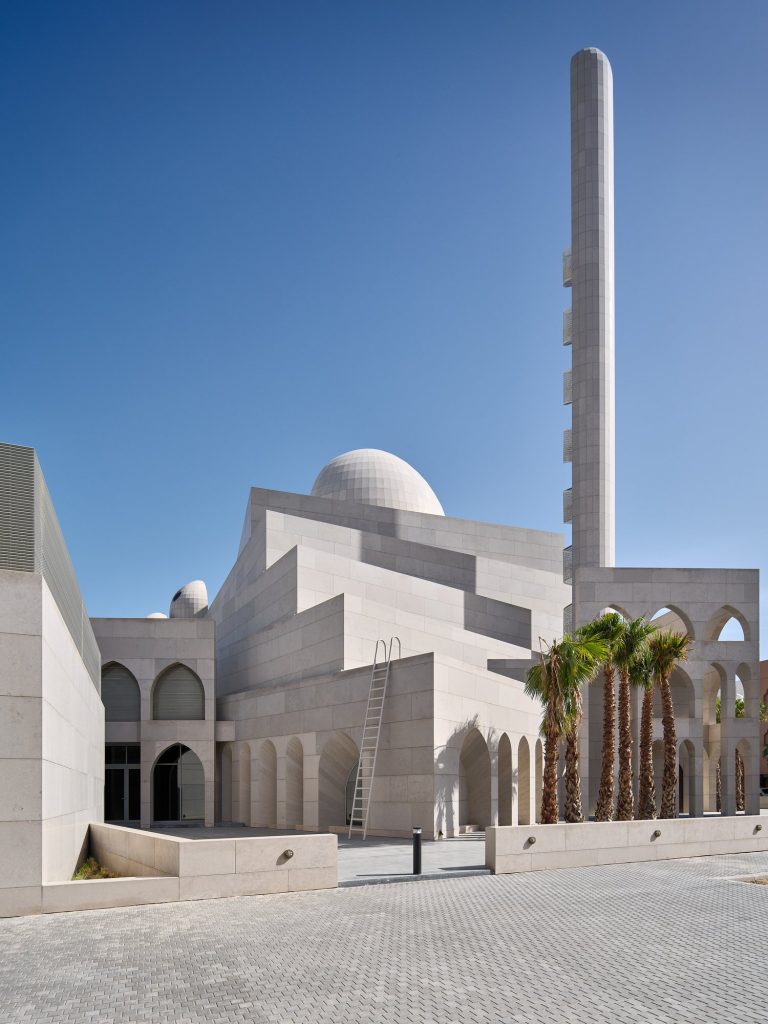
Mamluki Lancet Mosque by Babnimnim Design Studio
The mosque is designed as a sequence of five square stone volumes, each resonating with the five daily prayers. The masses are stacked on top of one another progressively rotating, 45° each around the building’s central axis toward the central half dome. The lower square, oriented towards the Qibla (prayer direction towards Makkah), symbolizes the foundation of faith and alignment to the Qibla, while the upper one, aligned with the site, represents the mosque’s connection to its surroundings.
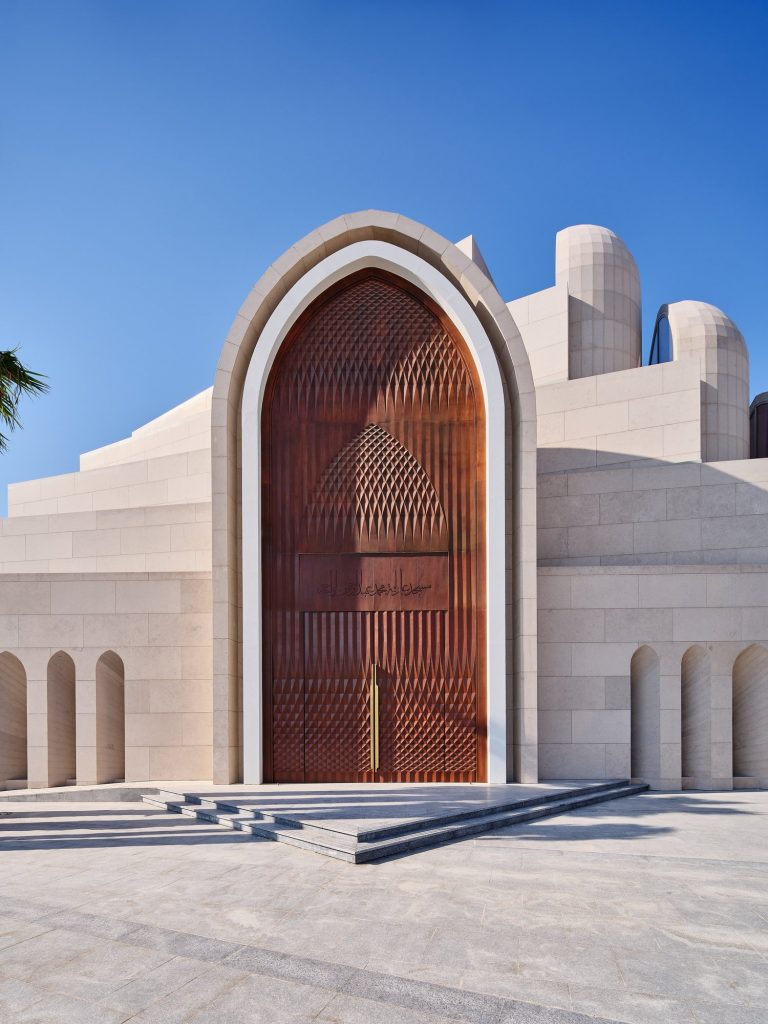
Mamluki Lancet Mosque by Babnimnim Design Studio
The three intervening masses dynamically coalesce to form a funnel-like configuration, creating an unobstructed interior devoid of columns, facilitating unhindered alignment for prayers. Lancet arch cutouts punctuate the façade, framing windows and structural elements at various levels.
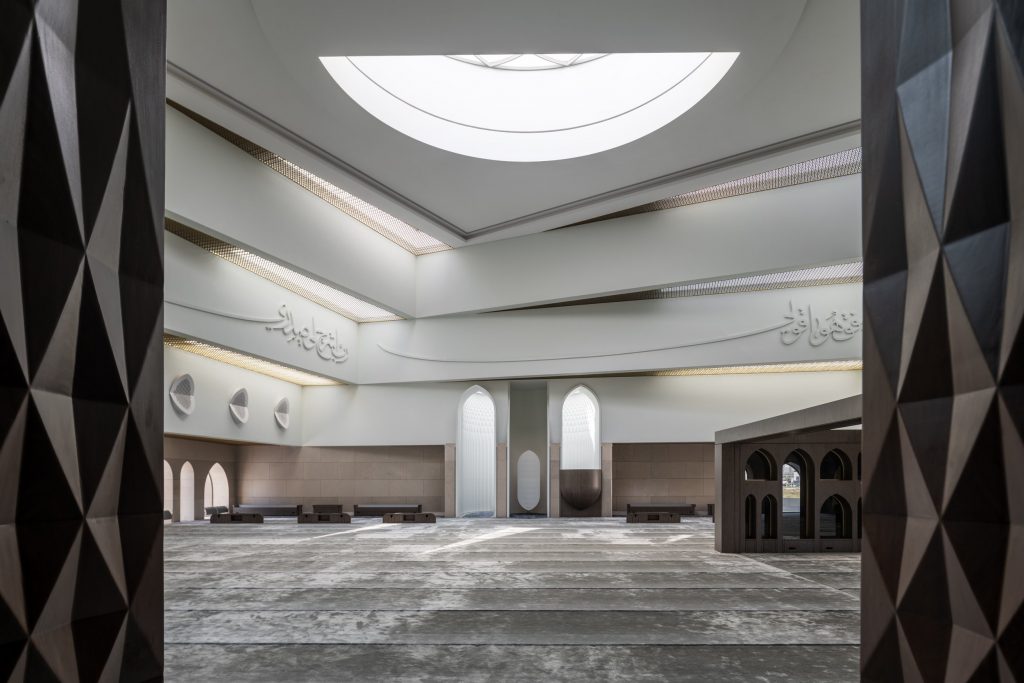
Mamluki Lancet Mosque by Babnimnim Design Studio
The central half dome is marked by the symbolic Islamic moon, engraved in intricate metalwork, that is echoed in the minaret, which stands tall and is aligned with the central axis, descending within to mark the indoor Mihrab area. Meanwhile, adjacent smaller half domes are arranged in a stepped configuration to serve as luminous wells, infusing natural light within and marking an inviting prelude to the women’s quarters.
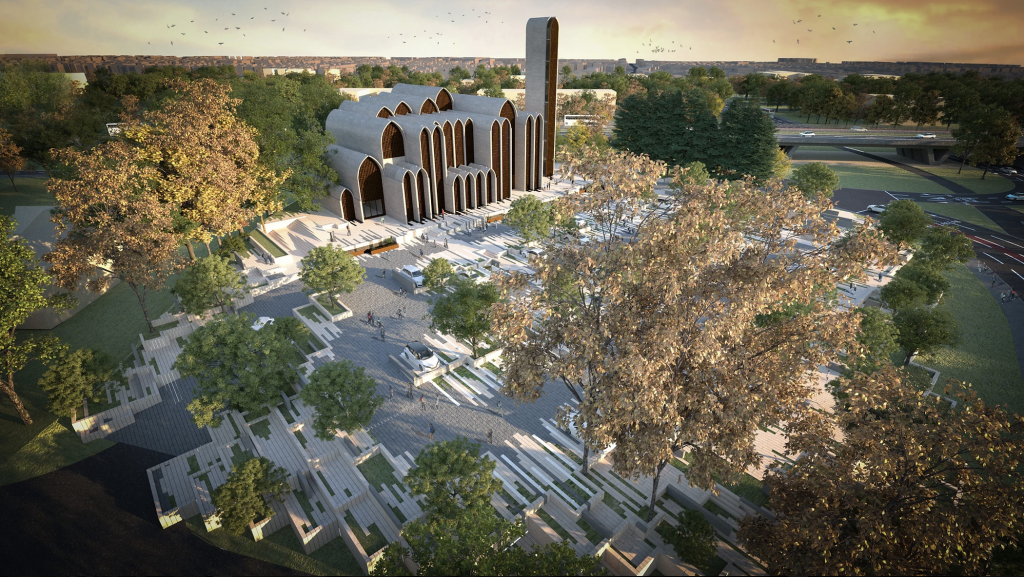
New Preston Mosque by Aidia Studio
Back in 2021, the Royal Royal Institute of British Architects held an international competition for a new iconic design for the Islamic sanctuary in Preston, England, at the top of a small hill. London and Mexico city-based Aidia Studio came up with a design, which they described as a “quintessential archetype of Islamic Architecture”. The team proposed to place the New Preston Mosque at the highest point on the site to cultivate the symbolic gesture of the ascension to the religious building from the surrounding area.
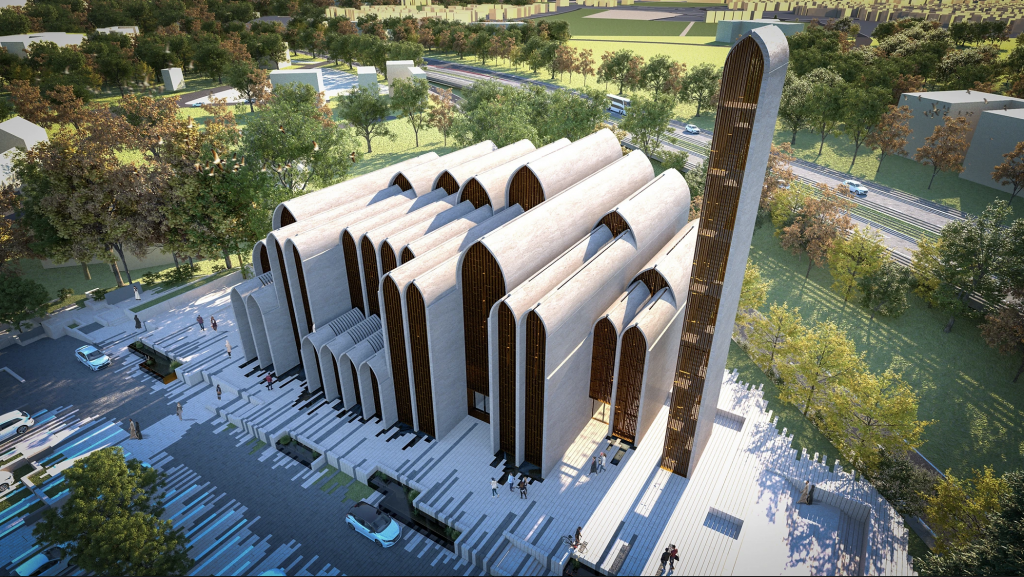
New Preston Mosque by Aidia Studio
The building comprises a repeated block system that used a collection of cascading lancet arches of reinforced ground natural stone (or glass fibre reinforced concrete) to create its form. A rear row of these 4.7-metre-wide arches stretches across the rear of the building while shorter, half-width arches are positioned at the front of the building.
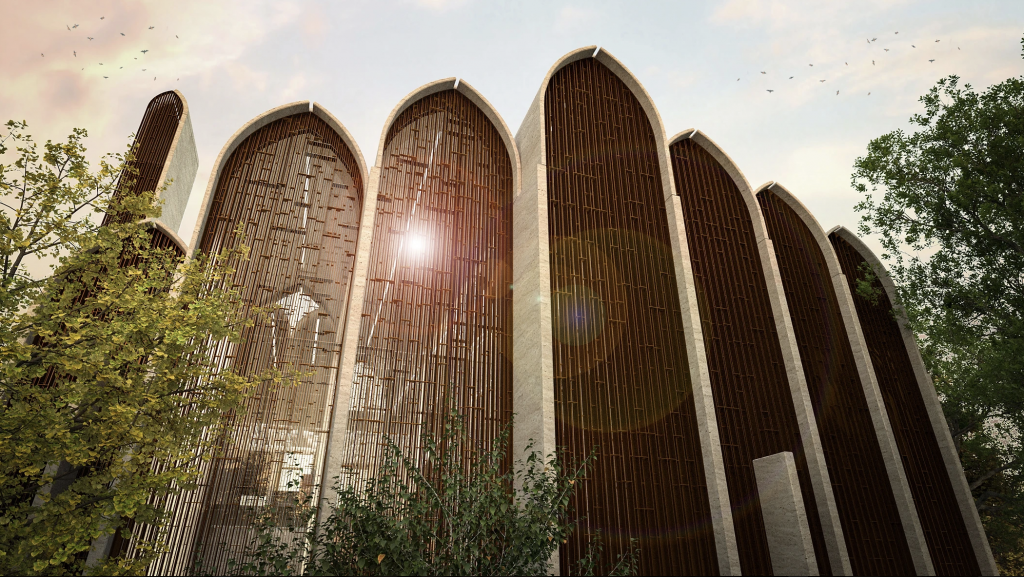
New Preston Mosque by Aidia Studio
The arches are decorated with cast bronze mashrabiya screens, a decorative screen and one of the most poetic Islamic architectural archetypes, to filter the light, create playful shadows across the interior and set the stage for a dimmed ceremonial atmosphere inside. The architects developed a special pattern to enhance the fractal linearity of the overall scheme.
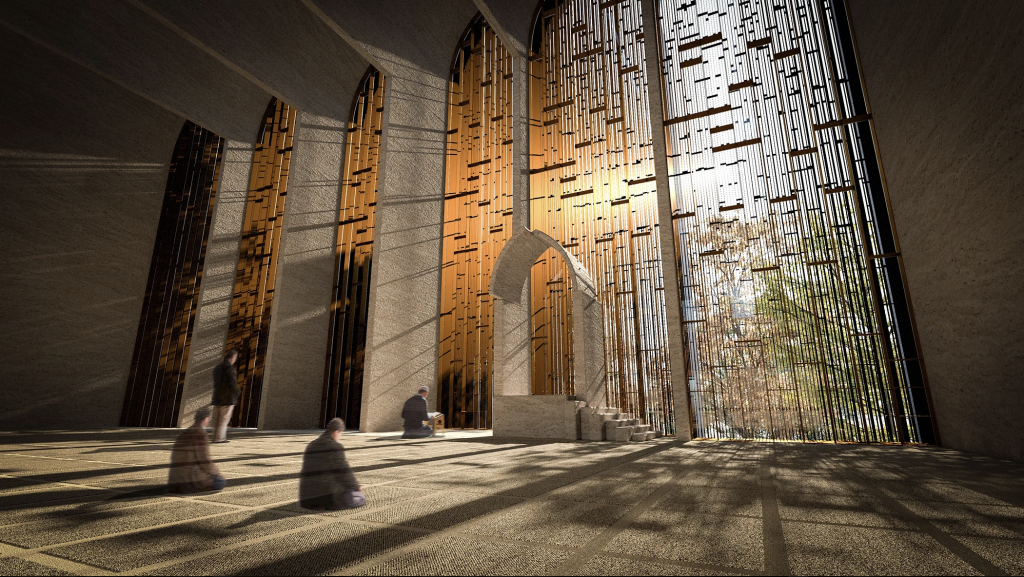
New Preston Mosque by Aidia Studio
The project also includes a 32-metre tall minaret tower as well as a landscaped car park. The approach that uses intertwining strips of slate and stone and a playful array of plates and benches aims to blur the boundary between parking and landscaping, disguising the carpark’s function.
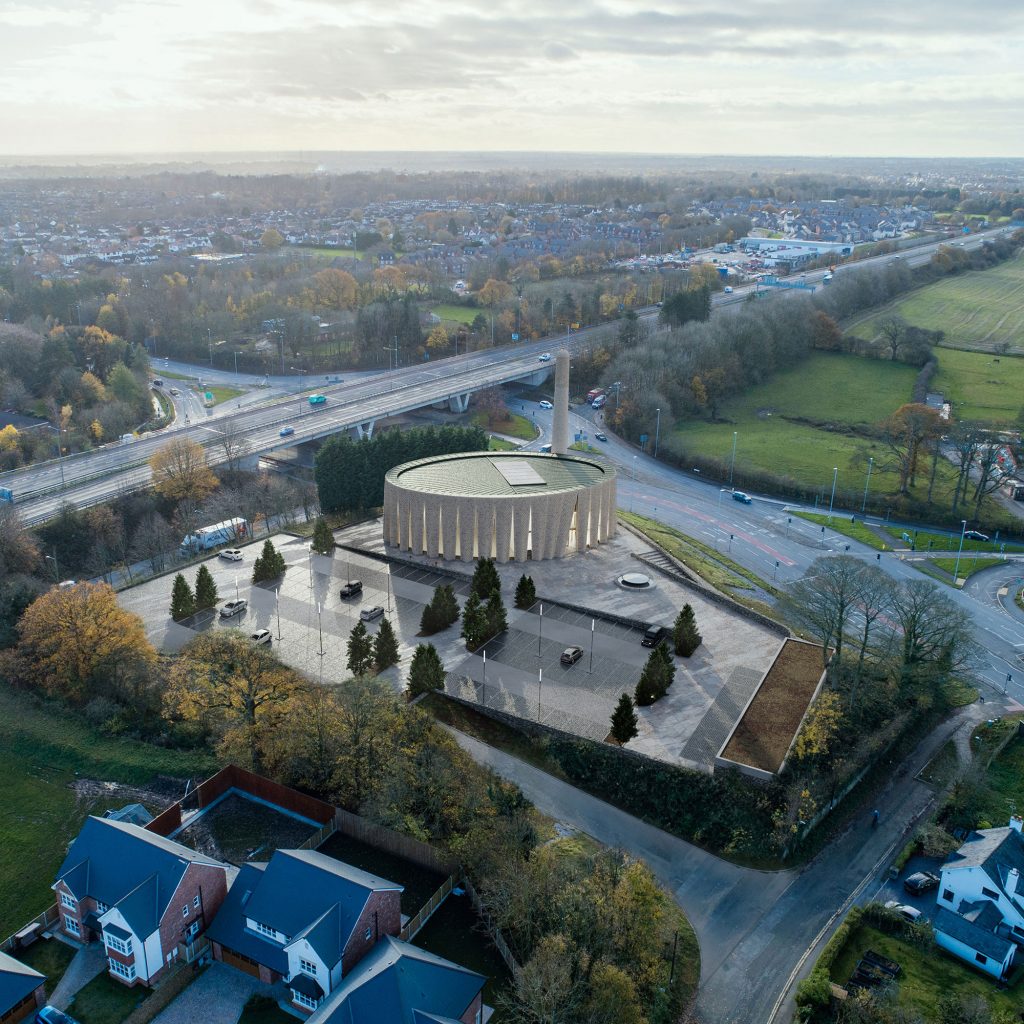
Brick Veil Mosque by Luca Poian Forms
The design titled Brick Veil Mosque by London-based architectural design studio Luca Poian Forms was selected as the competition’s winning proposal.
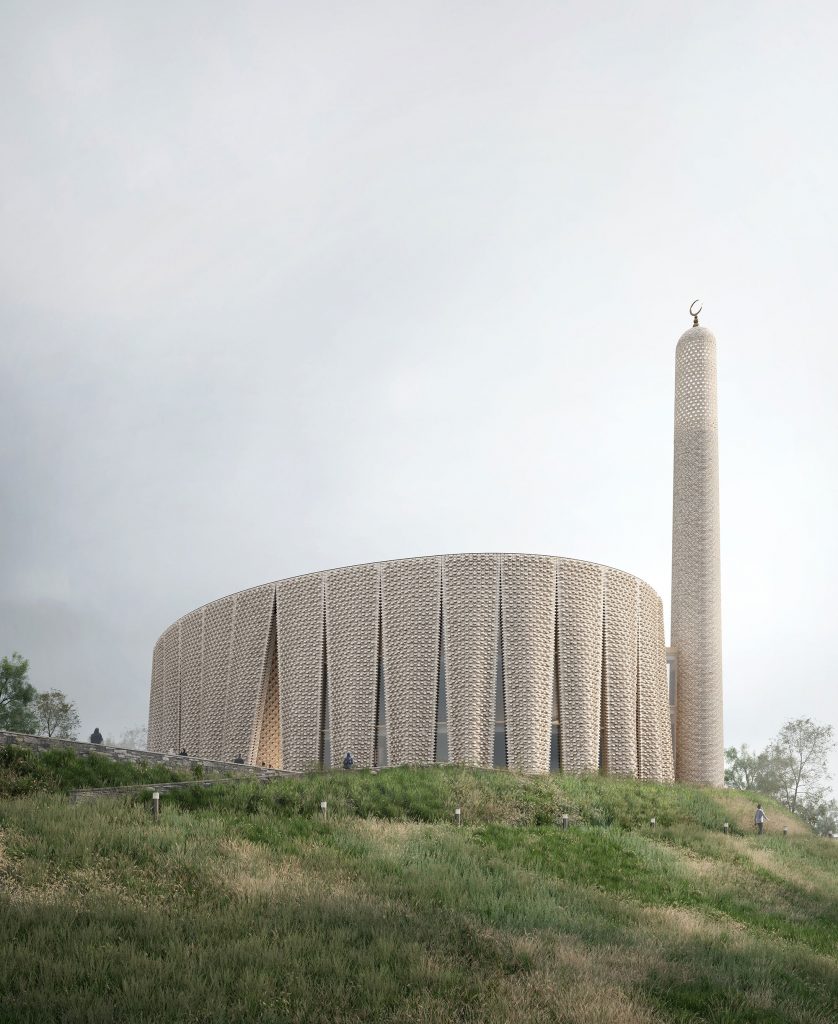
Brick Veil Mosque by Luca Poian Forms
The team sought to move away from traditional typologies, instead it proposed a structure that is at once monolithic and ethereal in appearance. Set to be located alongside the Preston guild wheel, a 21-mile ‘Greenway’ that encircles the city, the building takes shape as an elliptical shape, subtly transforming from various vantage points. The focal point of the design is its highly articulated brick veil-like facade that pays homage to traditional mashrabiyas.
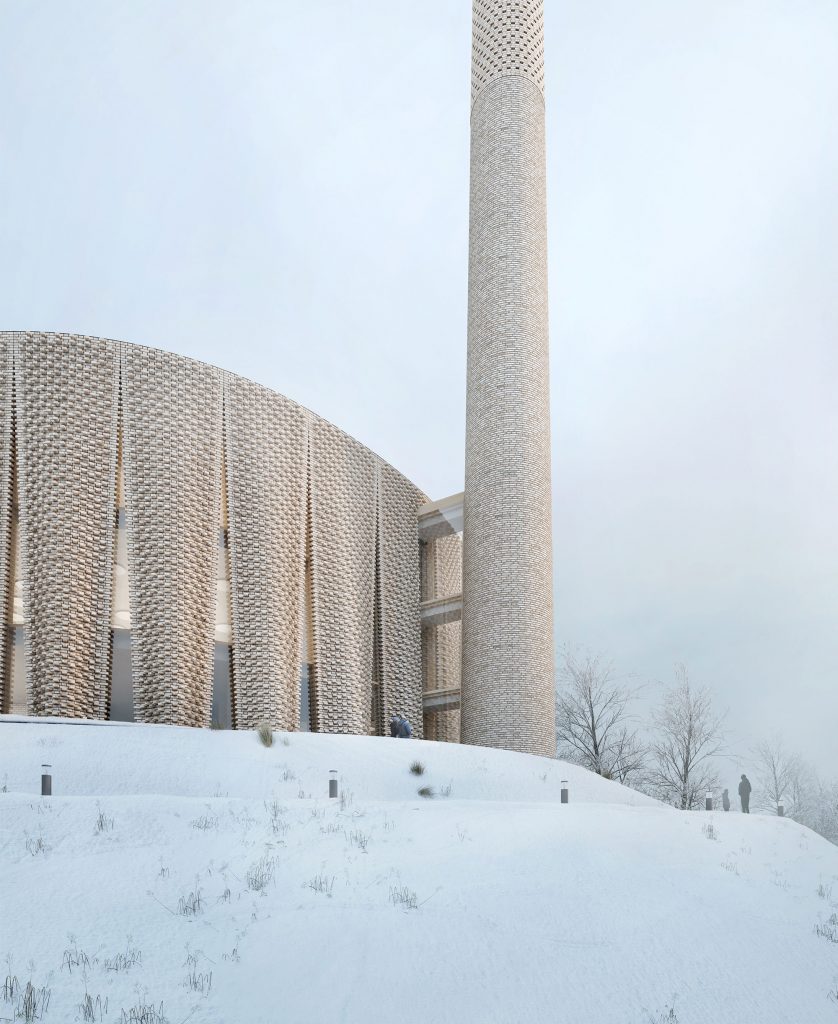
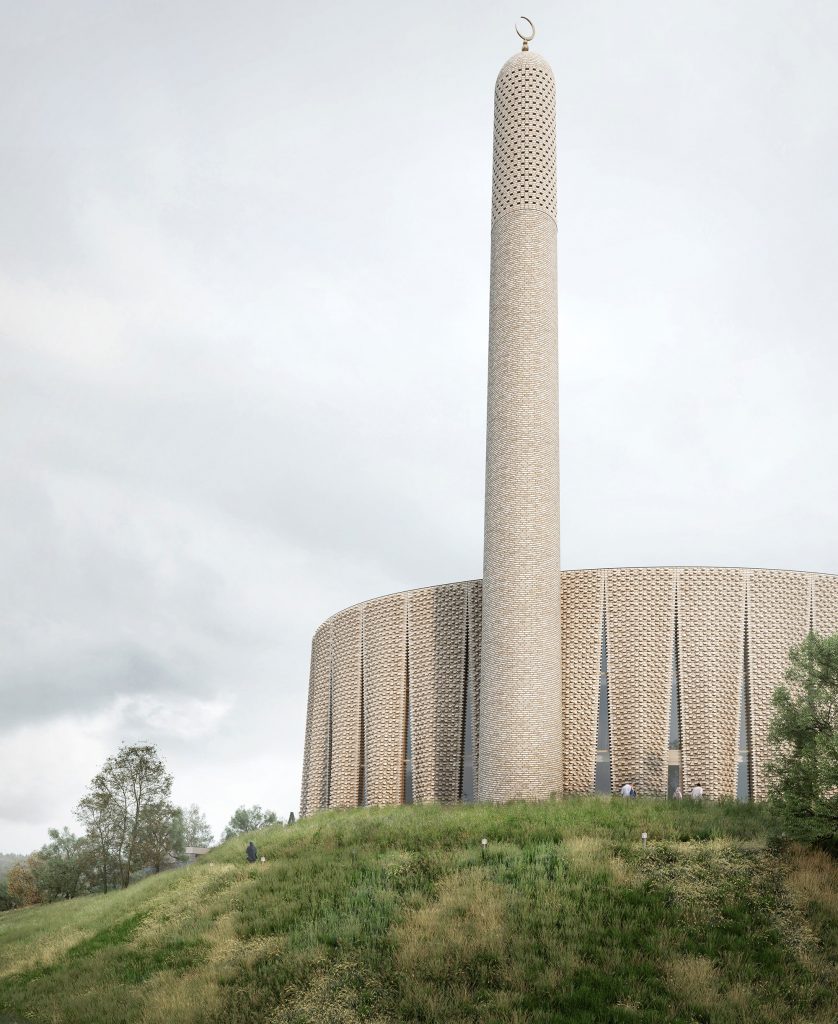
Brick Veil Mosque by Luca Poian Forms
Seeking to harmonize the relationship between the existing and the news, the project is imbued with multiple layers of references to both Islamic culture and textile manufacturing industry of the region. For example, conceived as a celebration of the local history and craftsmanship, the minaret tower references Lancashire’s recognizable cotton mill chimneys.